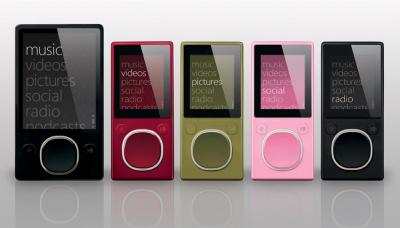

Microsoft was in an enviable position in the early 2000s as its Windows operating system was the world’s dominant computing platform (thanks to Windows XP), and it was throwing down a stiff challenge to the Sony PlayStation with its Xbox gaming console.
However Apple at this time was making its comeback, helped in no small measure by the stunning success of its iPod portable media player.
Hindsight tells us that Nokia at that time could have posed a real challenge to Apple’s iPod success, as Nokia handsets also had the ability (barely) to play music.
But by this point the Finnish management team was effectively asleep at the wheel and horribly complacent. And it soon found itself in trouble after the arrival of the iPhone in 2007.
Observing this fast changing consumer market was Microsoft. It had some hardware success stories in the past, including the Microsoft Mouse in the 1990s, and now its Xbox gaming system.
So why not throw down a challenge to Apple and develop its own portable media player?
It created MSN Music in 2004 for example to compete with Apple’s iTunes services, and in 2006 with much fanfare (including an endorsement from Barack Obama), Microsoft officially launched the Zune.
The first device was the Zune 30, released in the United States on November 2006. It came with a capacity of 30 gigabytes, as well as a FM radio, and a 3-inch screen. The Zune 30 was initially available in black, brown (yes brown!) or white.
But unfortunately for Redmond, the Apple iPod juggernaut was simply unstoppable at that time, as the it had had five years to cement its market leading position. iPod had already become the world’s de facto digital entertainment device.
Indeed, in terms of market share, Zune never got past the single digits. The iPod on the other hand enjoyed three quarters of music-player sales worldwide, whereas the Zune suffered derision from both pundits and tech fans alike.
But Microsoft stuck with it. In 2007 it launched the Zune 80, alongside the smaller Zune 4 and Zune 8 to compete with Apple’s iPod nano line.
And then in 2009 it launched the Zune HD, which was the first touch screen Zune. Whilst the Zune HD gathered good reviews, it was still a Zune to the general public, and it just didn’t sell.
Microsoft released a slightly upgraded version in 2010, but by October 2011 it was clear Microsoft was on a losing wicket and Redmond pulled the plug. Microsoft of course was also having to contend with the much larger trend of standalone music players giving way to smartphones.
The Zune did have some problems. For example in December 2008, many first generation Zune 30 models froze. Microsoft blamed the problem on an internal clock driver written by Freescale and the way the device handled a leap year.
But the Zune had its good points as well. Some preferred the design of the Zune HD, which was a less flashy device compared to the iPod Touch line, with a utilitarian, brushed-metal back panel that was pinned on with four prominent screws.
The Zune HD had bright OLED text-only home screen, and boasted a boldly original design compared to the iPod and iPhone’s illustrated icons.
If a user tapped on a Zune menu item, the device dived into the function with a quick, animated zoom. Navigation therefore was quick and ease, and some reviewers found it to be every bit as functional as the iPod Touch’s interface.
Another Zune innovation was its wireless connection. This could allow for example owners to share music with each other. But if a user was passed a copyright song by another Zune user, they could play it only three times (over three days).
So why then was the Zune considered (in some circles) to be one of the biggest flops in corporate history?
Well, in order to become the dominant media player Microsoft needed a device that could make the iPod look old-fashioned. And the the Zune HD just didn’t do that, and there was no real reason to buy the Zune unless you were firmly in the anti-Apple camp.
And Apple’s sheer marketing power at this stage was simply too much of a hurdle for the Zune.
All that said however, it should be remembered that the influence of Zune did continue for a time at Microsoft.
When Redmond’s designers began to work on the Windows Phone 7 mobile operating system (released in 2010) they utilised the Zune HD’s text navigation system as the centre piece of the OS. They also incorporated the design aesthetic of the Zune into Windows Phone OS, and then added the iconic “live tiles” to the phone’s home screen.
But they say history has a nasty way of repeating itself.
Microsoft’s Windows Phone adventure over the following years was brutally terminated, and Redmond’s entire mobile strategy is currently in a state of flux (to put it kindly).
New chapter for famous name from Internet's early days, Napster, has been acquired and will…
Solving not-spots? Ofcom proposal to make UK the first European country to allow ordinary smartphones…
Pioneering robotaxi service from Alphabet's Waymo to go live in Washington DC next year, as…
Dozens of Chinese firms added to US export blacklist, in order to hamper Beijing's AI…
Chinese rival BYD overtakes global revenues of Elon Musk's Tesla, as record number of Tesla…
Messaging app Signal in the headlines after a journalist was invited to a top secret…
View Comments
I really loved reading your blog. I also found your posts very interesting. In fact after reading, I had to go show it to my friend and he enjoyed it as well!
Square Stickers